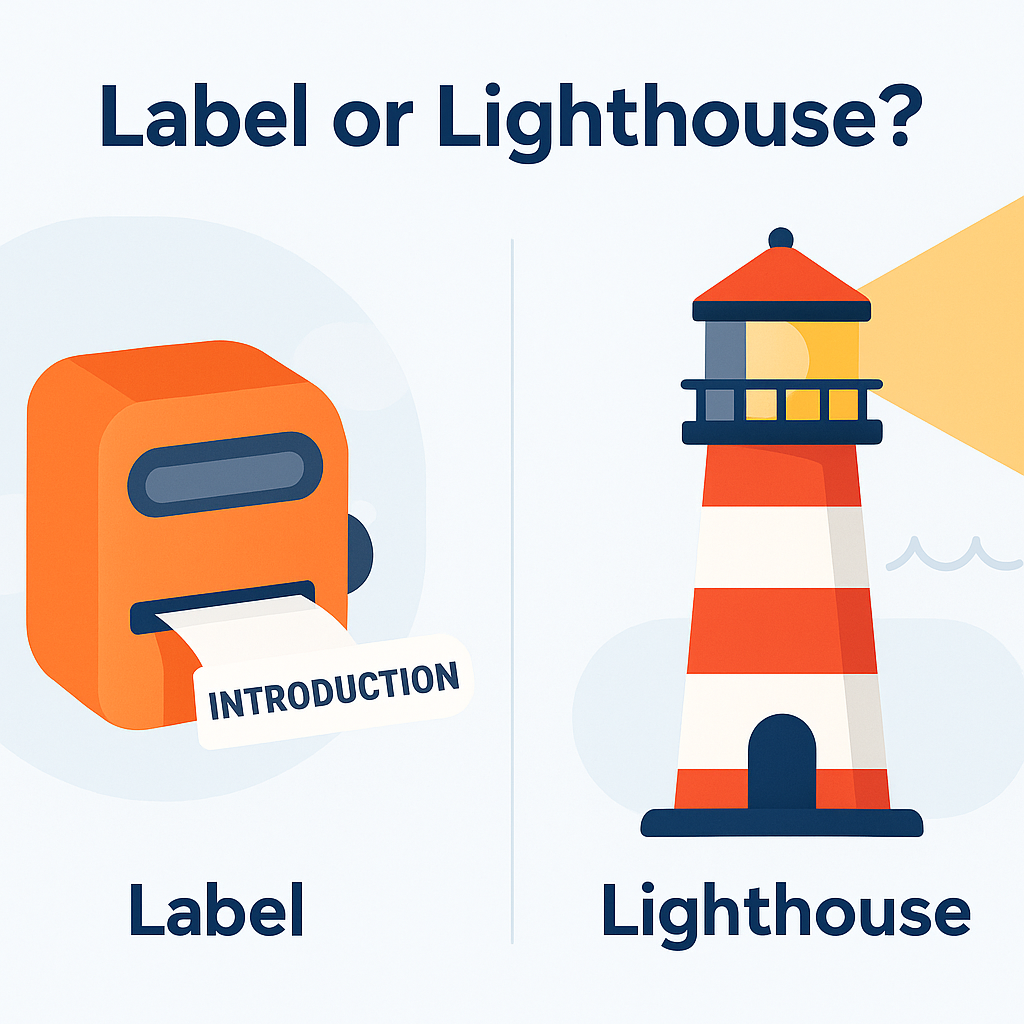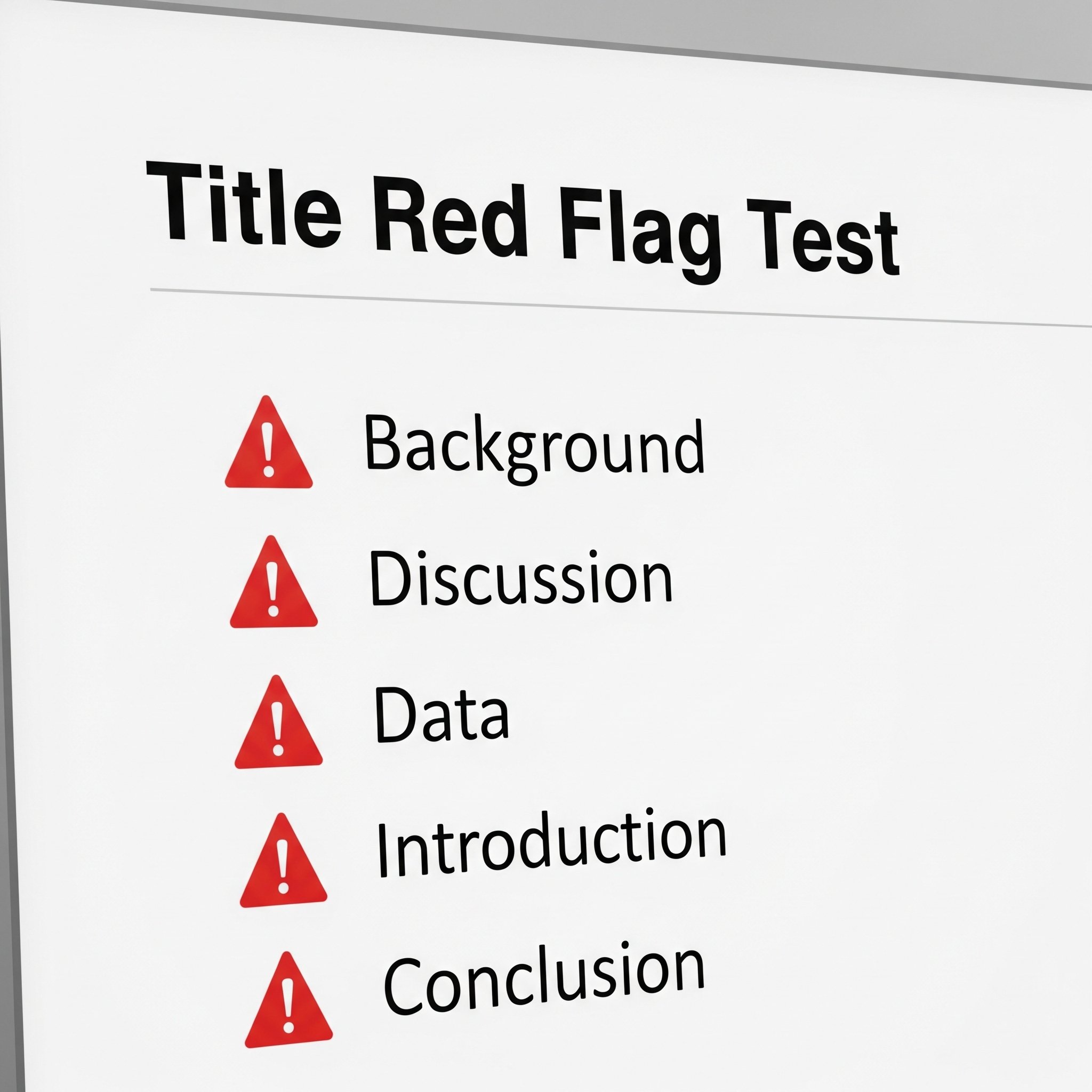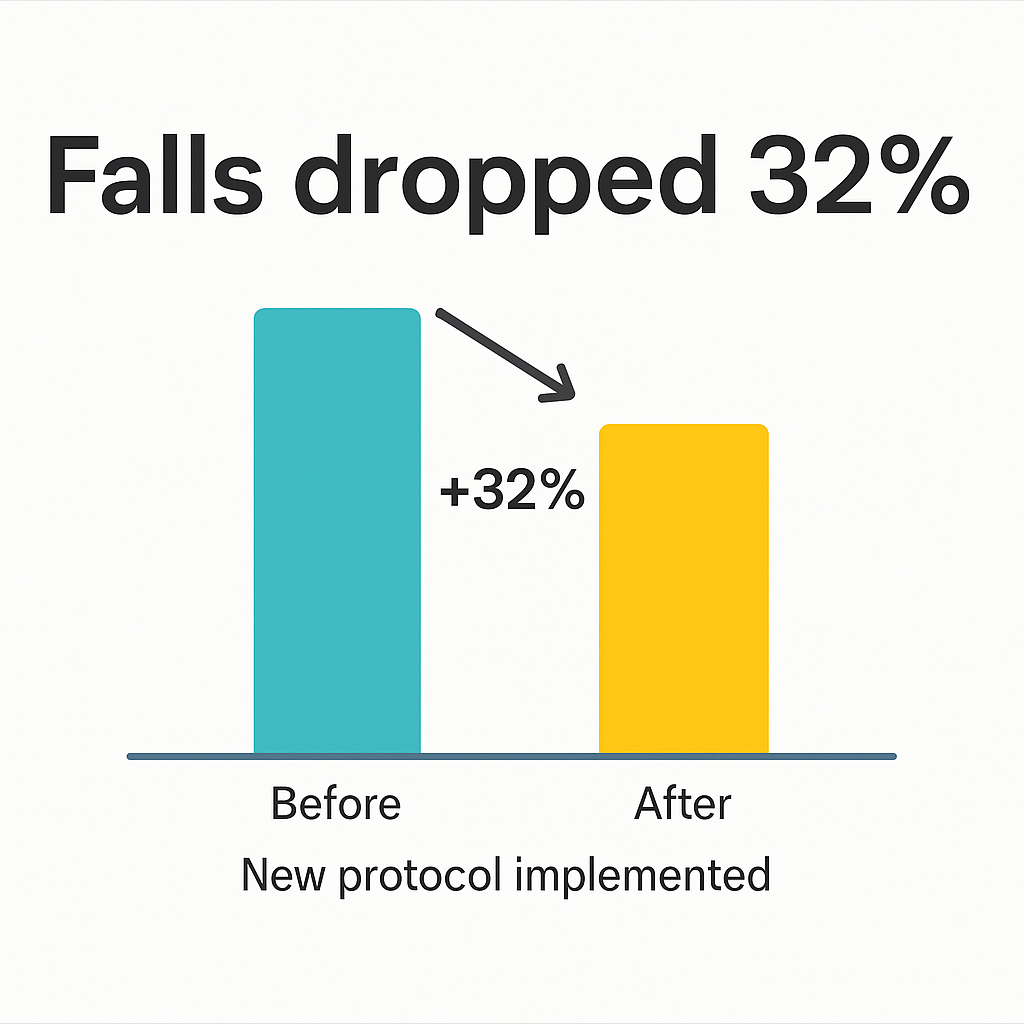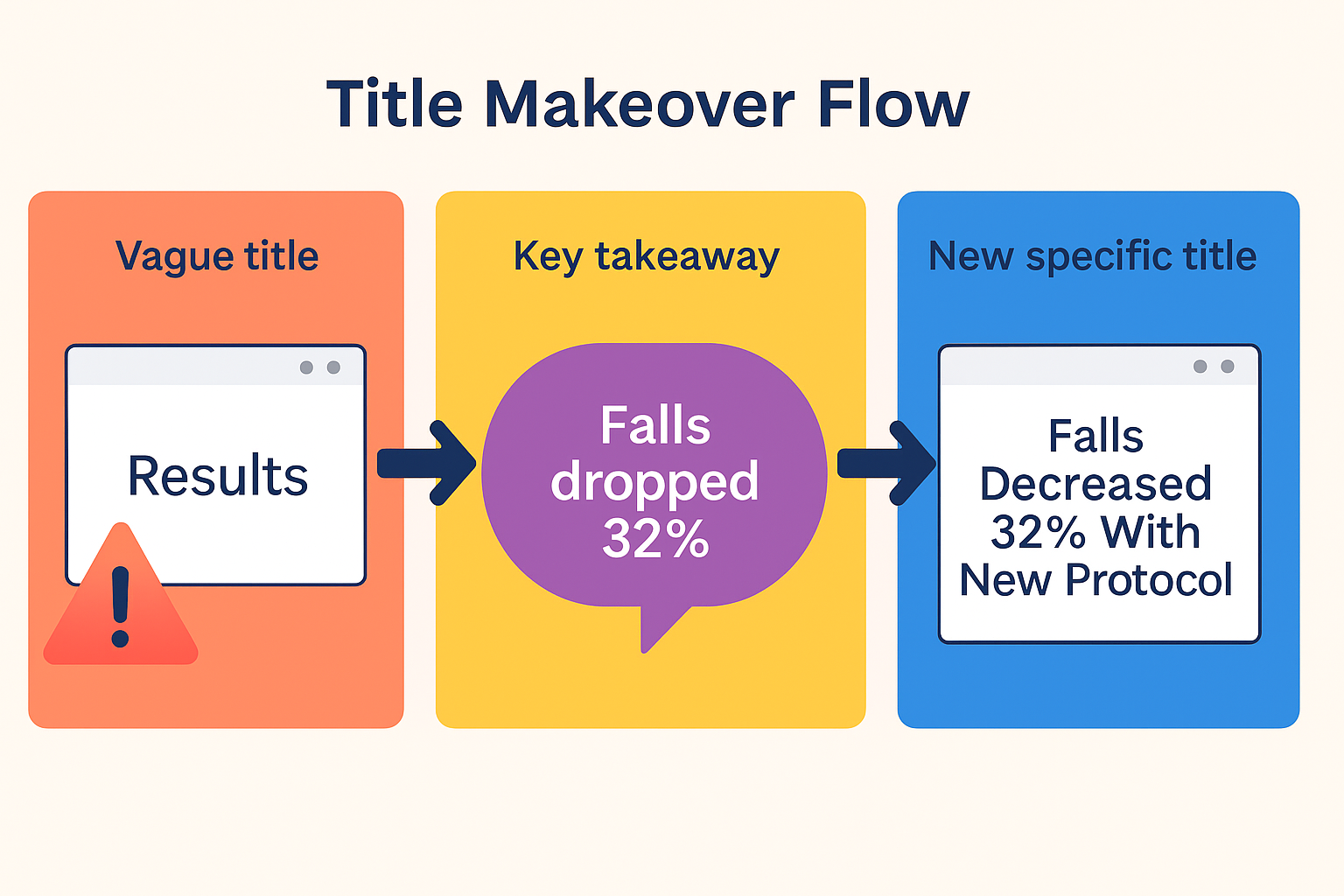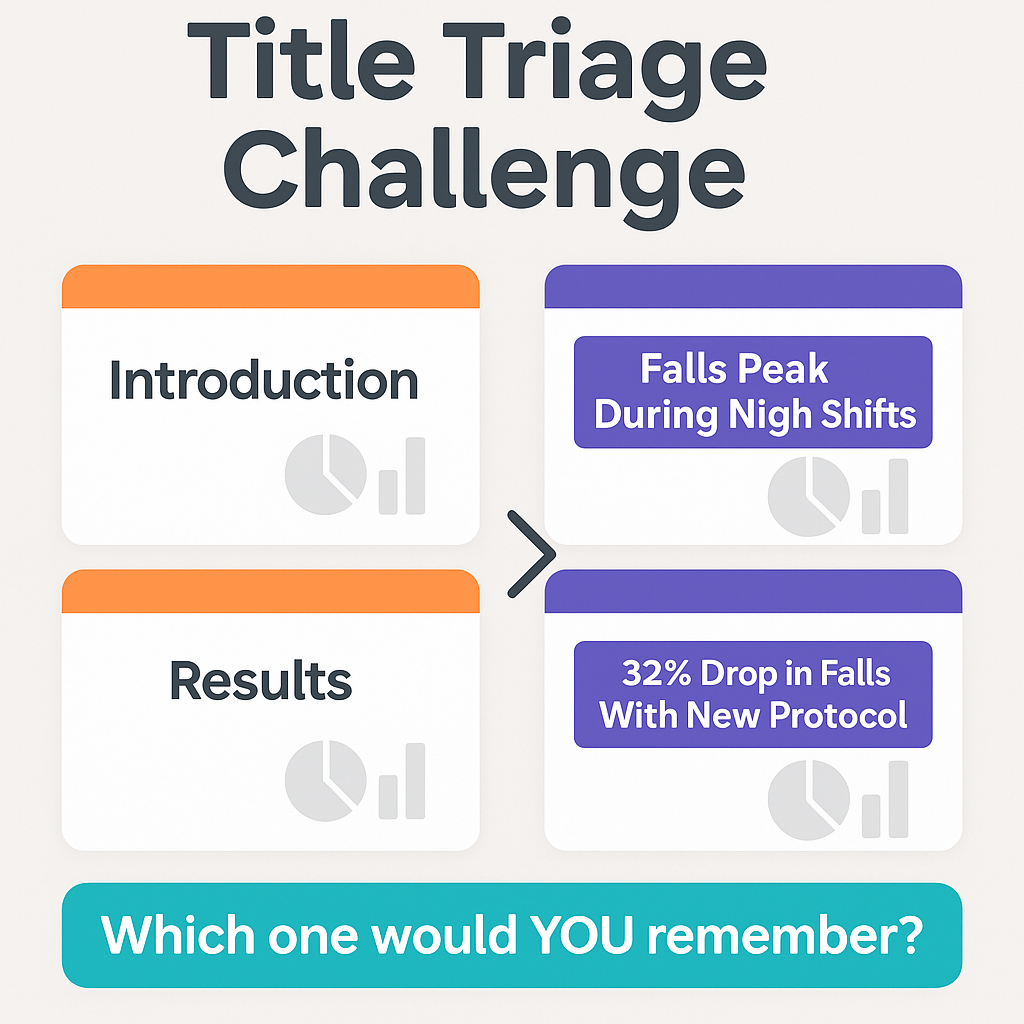Blog #4: Stop Using 'Introduction' — Say What You Mean
“The single biggest problem in communication is the illusion that it has taken place.” — George Bernard Shaw
Introduction
You’ve probably seen it on the first slide of every clinical presentation: a lone word at the top that says 'Introduction'. It doesn’t say what the topic is. It doesn’t explain why the audience should care. It’s just a placeholder.
In a high-stakes medical setting, we can do better. At SlidesRx, we believe slide titles shouldn’t just mark sections—they should *mean* something. Vague headers like 'Results', 'Discussion', or 'Conclusion' don’t guide or teach. They confuse.
This blog is about upgrading your slide titles from filler to functional. You'll learn how to spot vague titles, rewrite them with clarity, and transform every heading into a takeaway. Because in clinical communication, clarity isn’t optional—it’s critical.
Metaphor for vague vs. guiding titles
🧠 Why Vague Titles Fail in Clinical Slides
Generic titles like 'Introduction' or 'Discussion' feel familiar—but they fail your audience. In clinical presentations, where every second counts, vague slide titles create confusion. They don’t orient the viewer, teach a takeaway, or support decision-making.
A good title acts like a clinical signpost. It tells the viewer not just *where* they are in the presentation—but *why it matters*. A 2023 review of 428 residency conference decks found that 62% of slides used one-word titles, and only 18% conveyed a clear conclusion or result.
This lack of specificity means the audience has to work harder to decode your message. That’s the opposite of clarity.
Try the SlidesRx test: Could five other presenters use your slide title today? If yes, it’s too vague. 'Results', 'Conclusion', and 'Discussion' are like generic containers. Your job is to label what’s inside.
For example: change 'Discussion' to 'Night Shift Doubles Fall Risk (OR 2.1)'. Or replace 'Methods' with 'Retrospective Review of 110 Discharges'. These revised titles tell the audience what happened—and why it matters.
Clear titles reduce guesswork. They make your slides faster to read, easier to follow, and more memorable. That’s not just design—it’s cognitive ergonomics.
Checklist of vague title examples
🎯 Every Title Should Teach
At SlidesRx, we treat titles like headlines. They don’t just name the topic—they *teach* the key point. That’s why we emphasize clarity over cleverness.
If a learner skims only your slide titles, they should still walk away knowing the story.
Replace noun-heavy labels with specific messages. Instead of 'Results,' try 'Falls Decreased 32% With New Protocol.' Instead of 'Introduction,' write 'Why Night Shift Had Highest Fall Rate.'
Your title is a cognitive anchor. It builds curiosity and reduces guesswork. It also sets expectations so your visuals don’t have to do all the work.
Clinical presentations need to be fast and focused. Let your titles handle the 'what' so your voice can handle the 'why.' Think of them like SOAP notes—quick, structured, actionable.
One trick: write your slide title *after* you create the visual. Ask yourself, 'What’s the message this chart/image is proving?' Then make that your title. If you can’t answer it in 10 words or fewer, the slide may be doing too much.
Every title should move your story forward. If it doesn’t, rewrite until it does.
Slide title as teaching point
🔍 How to Diagnose and Fix Weak Titles
Start by scanning your deck for vague headings. Highlight every title that could appear in someone else’s presentation. These are your problem slides.
Next, apply the SlidesRx test: write the key takeaway in 10 words or less. If you can’t, your slide likely has too many ideas or too little clarity.
Finally, rewrite. Use clinical data, action verbs, or results. For example:
• 'Discussion' → 'Delirium Risk Highest at Night (OR 2.5)'
• 'Methods' → 'Retrospective Review of 124 ICU Admissions'
Your slides are a clinical argument. Make each title a conclusion worth remembering.
Try building a 'title checklist' slide. Gather your old headers on one side, and the rewrites on the other. Share this during lab meetings or grand rounds. It’s one of the simplest ways to elevate an entire department’s clarity.
Still unsure if your title works? Read it to a colleague without the slide. Ask: 'What do you think this means?' If they can’t answer confidently, it needs a rewrite.
Fixing weak titles won’t just improve your slides. It will sharpen your thinking, focus your voice, and strengthen every message you deliver.
Flowchart for fixing slide titles
⚡ Quick Takeaways
• Avoid titles like 'Intro', 'Methods', or 'Conclusion'—they teach nothing.
• Replace each with a clear, specific clinical message.
• Use data, verbs, and 10-word summaries to clarify meaning.
• Try the '5 other people' test: If it’s generic, rewrite.
• Your audience reads titles first—make them count.
• Great titles = faster understanding + better retention.
✅ Conclusion
When slide titles shift from labels to lessons, your message becomes magnetic.
Specific titles boost memory, reinforce clarity, and help your audience follow your story—even if they only read the slides.
It’s a small change that creates a massive impact.
🎯 Challenge
Find a slide titled 'Results', 'Data', or 'Discussion' in your last talk.
Rewrite it using a 10-word takeaway—include data, action, or outcome.
Send us both. We’ll post the best transformations (with permission)!
Quiz format for vague vs. clear titles
🔜 Next Week Preview
Next week, we’ll tackle another SlidesRx essential: visual overload.
You’ll learn how to turn dense paragraphs into fast visuals—charts, diagrams, and image-first slides that boost attention and recall.
Because clean visuals aren’t decoration—they’re data clarity.
💬 Call to Action
Slide titles shape what your audience sees and remembers.
Let’s fix them—together.
What’s the worst or most boring title you’ve seen on a slide?
Share it using #SlidesRx or tag us directly.
We’ll help rewrite it into something bold, specific, and unforgettable.
